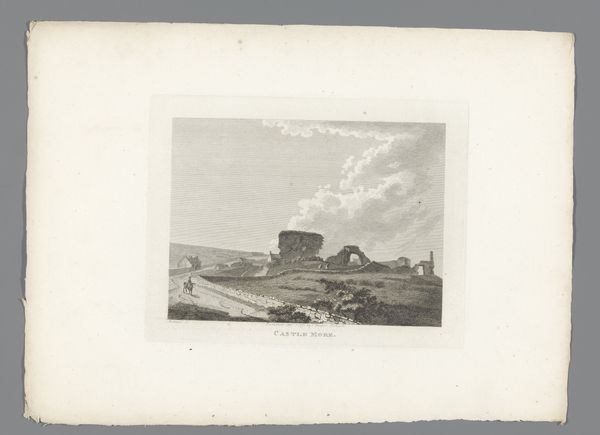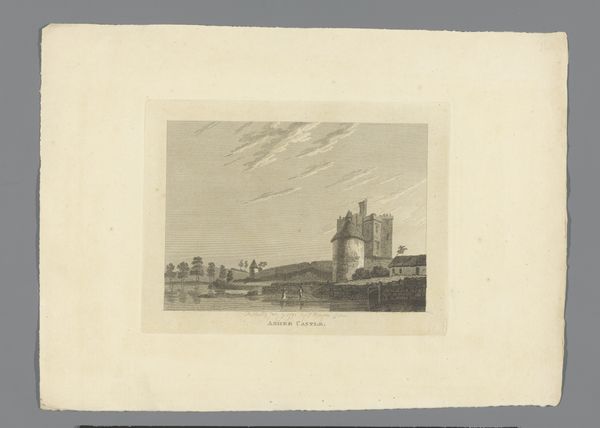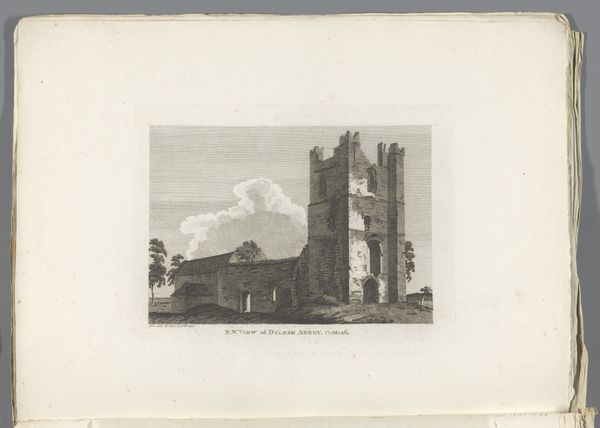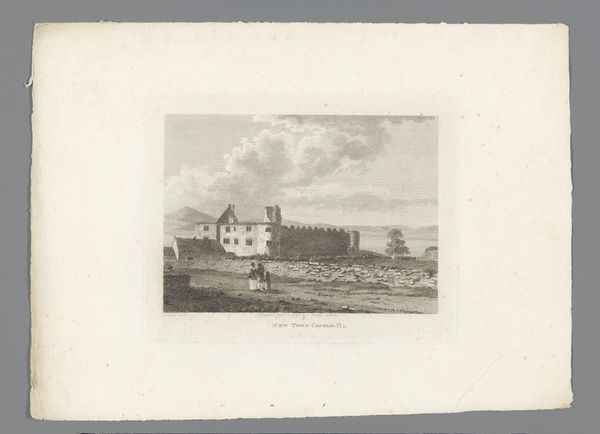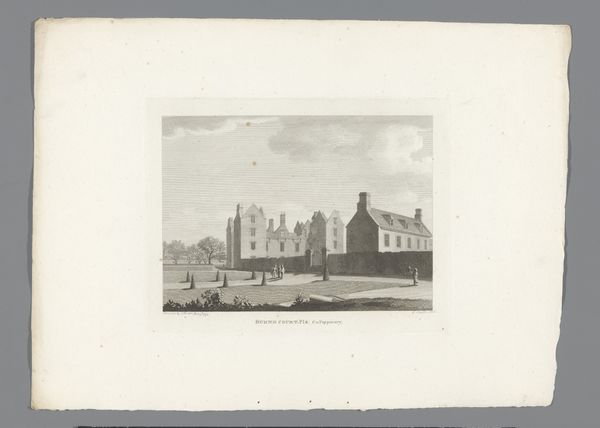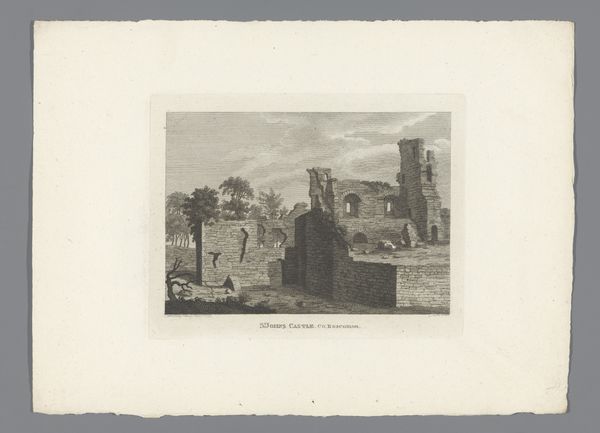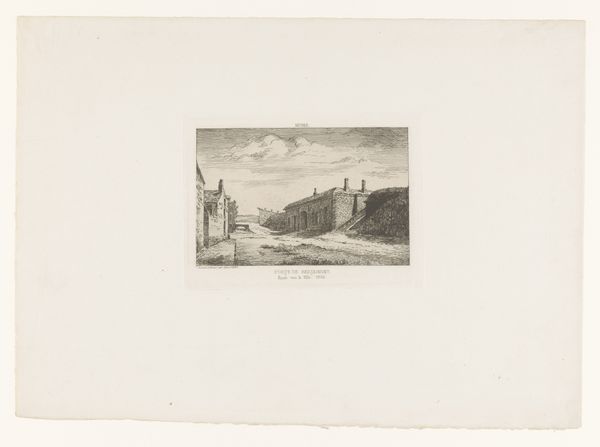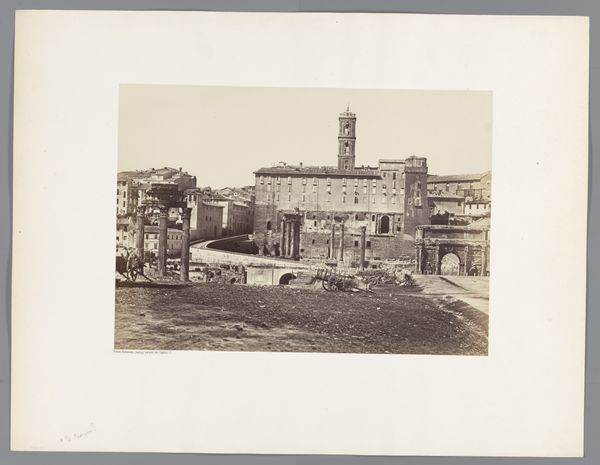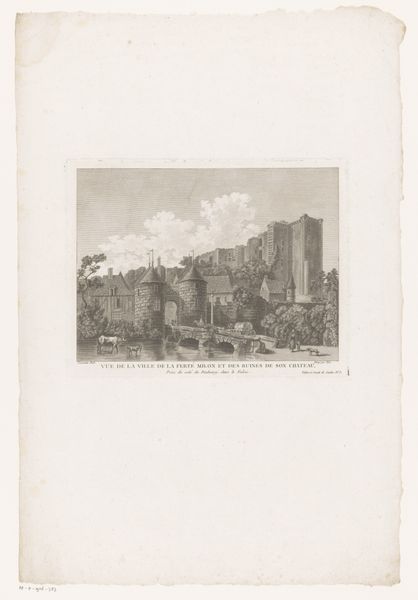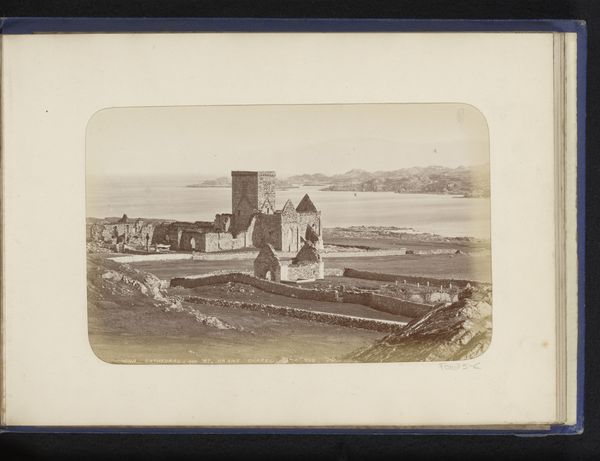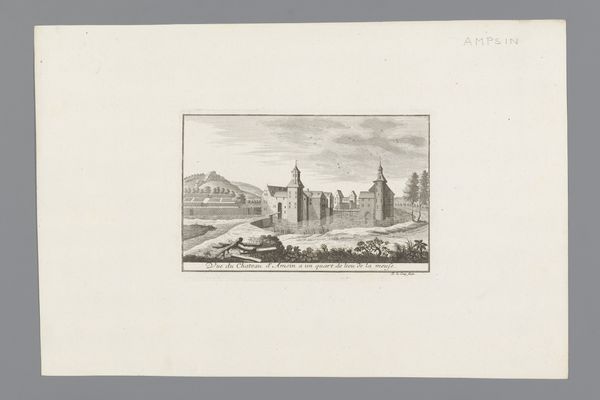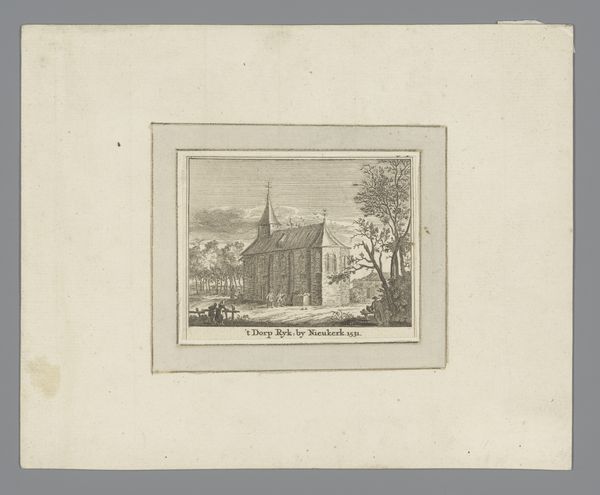
print, engraving
# print
#
landscape
#
romanticism
#
engraving
Dimensions: height 198 mm, width 200 mm
Copyright: Rijks Museum: Open Domain
Editor: Here we have an engraving, possibly from between 1791 and 1795, titled "Gezicht op de ruïnes van Grandison Castle," or "View of the Ruins of Grandison Castle." It’s by an anonymous artist, and it's housed right here at the Rijksmuseum. It's really striking how delicate and detailed the engraving is, almost like a photograph. What captures your attention most about this piece? Curator: Ah, ruins! They whisper tales, don't they? For me, it's the contrast between the obvious decay and the sheer steadfastness. Look how the artist renders the stone, so precisely, yet we know time is the ultimate sculptor. There’s a gentle melancholy hanging in the air, wouldn’t you agree? It’s not just a depiction of a place, it’s a meditation on time, power, and perhaps, loss. I wonder, do you feel a connection to the Romantic movement here? Editor: Definitely, that melancholic feel is very Romantic! I can sense that contemplation on time and loss you mentioned. How do you think the landscape itself contributes to that mood? Curator: Clever question! See how the mountains fade into the background? They feel almost indifferent to the ruins, eternal witnesses to human endeavor. And that sky, full of soft, transient clouds… it’s a constant reminder of change, compared to the static, crumbling castle. The artist isn't just showing us a pretty picture; they're inviting us to contemplate our place within a vast, indifferent universe. Makes you feel rather small, doesn't it? Editor: Absolutely. I never thought about the landscape being indifferent before. It gives the ruins so much more context! I'll never look at a landscape the same way again. Curator: Excellent. Keep those eyes – and your mind – open! Art has a funny way of rewriting your senses.
Comments
No comments
Be the first to comment and join the conversation on the ultimate creative platform.
